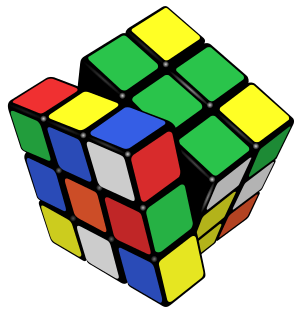| Group theory |
 |
Group theory
| Basic notions |
Subgroup
Normal subgroup
Quotient group
Group homomorphism
(semi-)direct product
|
| Discrete groups |
Classification of finite simple groups
Cyclic group Zn
Alternating group An
Sporadic groups
Mathieu group M11..12,M22..24
Conway group Co1..3
Janko group J1, 2, 3, 4
Fischer group F22..24
Baby Monster group B
Monster group M
Other finite groups
Symmetric group, Sn
Dihedral group, Dn
Infinite groups
The integers, Z
Modular groups, PSL(2,Z) and SL(2,Z)
|
| Topological groups |
Lie group
General linear group GL(n)
Special linear group SL(n)
Orthogonal group O(n)
Special orthogonal group SO(n)
Unitary group U(n)
Special unitary group SU(n)
Symplectic group Sp(n)
G2 F4 E6 E7 E8
Lorentz group
Poincaré group
|
| Infinite dimensional groups |
conformal group
diffeomorphism group
Loop group
Quantum group
O(∞) SU(∞) Sp(∞)
|
|
|
In math, there are many subjects. One of these is group theory. In group theory, the Monster group (shortened to M or F1) is important. It is also called the Fischer-Griess Monster, or the Friendly Giant. It is a group of finite order, which is equal to:
- 246 · 320 · 59 · 76 · 112 · 133 · 17 · 19 · 23 · 29 · 31 · 41 · 47 · 59 · 71
- = 808017424794512875886459904961710757005754368000000000
- ≈ 8 · 1053.
It is a simple group. Simple groups have only two normal subgroups: the identity element, and M.
The finite simple groups have been completely classified (the classification of finite simple groups). There are two kinds of finite simple groups in the list of finite simple groups. The first kind has 18 countably infinite families. The second kind has 26 sporadic groups. They are not as systematic. The Monster group is the largest of these sporadic groups. It contains all but six of the other sporadic groups inside of it. Robert Griess has called these six exceptions pariahs. The rest make up the happy family.
See also
 In Spanish: Grupo monstruo para niños
In Spanish: Grupo monstruo para niños

 In Spanish: Grupo monstruo para niños
In Spanish: Grupo monstruo para niños
